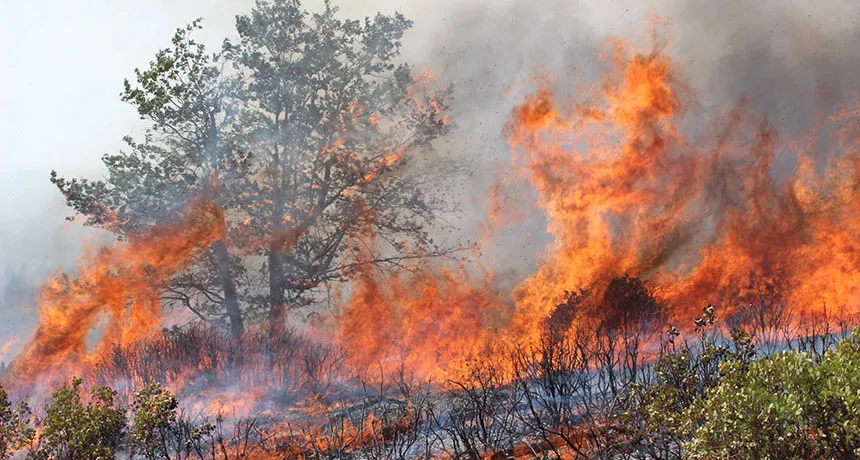
FIRE STARTER Wildfires will spew more soot into the air in many regions by the end of the century, new research predicts. That soot could darken Arctic ice and accelerate melting.
Mike McMillan/U.S. Forest Service

FIRE STARTER Wildfires will spew more soot into the air in many regions by the end of the century, new research predicts. That soot could darken Arctic ice and accelerate melting.
Mike McMillan/U.S. Forest Service